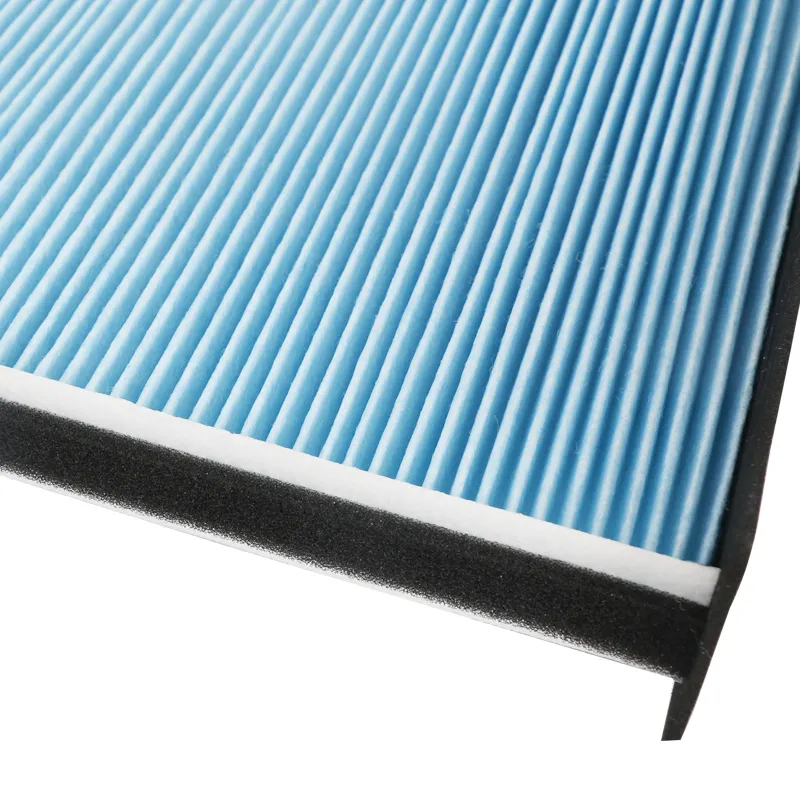Aug . 22, 2024 06:03 Back to list
Kia Telluride Oil Filter Specifications and Recommended Replacement Guide
Understanding the Kia Telluride Oil Filter A Comprehensive Guide
The Kia Telluride has taken the automotive market by storm since its debut, praised for its spacious interior, advanced technology, and impressive performance. As with any vehicle, regular maintenance is crucial for ensuring longevity and optimal performance. One of the most vital components in this maintenance routine is the oil filter. This article will delve into the importance of the oil filter in the Kia Telluride, how to choose the right one, and tips for changing it.
Importance of the Oil Filter
The oil filter plays a critical role in the engine's health. Its primary function is to clean the engine oil by removing contaminants such as dirt, debris, and metal shavings that could accumulate over time. When engine oil circulates through the engine, it picks up these harmful particles, which can lead to increased wear and tear or even severe engine damage. A clean and efficient oil filter ensures that only clean oil circulates back into the engine, contributing to a smoother and more efficient performance.
For the Kia Telluride, maintaining a high-quality oil filter is crucial. With its powerful V6 engine and advanced technology, the Telluride demands a robust and efficient oil filtration system to perform at its best. Neglecting to replace the oil filter regularly could lead to oil sludge buildup and reduced engine efficiency, ultimately shortening the lifespan of the vehicle.
Choosing the Right Oil Filter
When selecting an oil filter for your Kia Telluride, it is essential to consider a few critical factors. First and foremost, always refer to the owner’s manual for manufacturer recommendations. The right filter will not only match the specific engine model but also meet the required specifications set by Kia.
There are various types of oil filters available in the market, including conventional filters, synthetic filters, and high-efficiency filters. While conventional filters are often sufficient for daily driving, many Kia Telluride owners opt for high-efficiency or synthetic options for better filtration and longevity. These filters are designed to trap smaller particles and can often withstand higher temperatures, making them a great choice for those who push their vehicles to the limit.
Tips for Changing the Oil Filter
Changing the oil filter in your Kia Telluride is a straightforward task that can be performed as part of your regular oil change routine. Here's a step-by-step guide
china kia telluride oil filter

1. Gather Supplies You will need a new oil filter, oil filter wrench, a new oil drain pan, and fresh oil. 2. Lift the Vehicle Use a jack to safely lift the front of your Telluride and secure it with jack stands.
3. Locate the Oil Filter The oil filter is usually located near the engine oil pan. Refer to the owner’s manual if you're unsure of its location.
4. Remove the Old Filter Use the oil filter wrench to loosen and remove the old oil filter. Be prepared for some oil spillage, so place the drain pan underneath.
5. Prepare the New Filter Before installing the new filter, apply a little fresh oil to the rubber gasket of the new filter. This helps create a better seal and makes future changes easier.
6. Install the New Filter Screw the new filter on by hand until it is snug. Avoid over-tightening.
7. Add New Oil After replacing the oil filter, add new oil to the engine as per the recommendations in the owner’s manual.
8. Check for Leaks Start the engine and let it run for a few minutes. Check around the oil filter for any leaks before lowering the vehicle.
Conclusion
Regular maintenance, including timely oil filter changes, is key to keeping your Kia Telluride performing at its best. By understanding the importance of the oil filter and following the tips provided, you can ensure your vehicle runs smoothly, extending its lifespan and enhancing your driving experience. Investing time in maintenance not only safeguards your investment but also contributes to the overall reliability and safety of your vehicle.
-
High-Quality Car Air Filter Manufacturer - 17801-31090 & 17801-0P010|OEM Quality&Customization
NewsJul.30,2025
-
Car Air Filter Manufacturer 17801-31090 17801-0P010 - QINGHE COUNTY ANNAITE AUTO PARTS CO.,LTD
NewsJul.30,2025
-
High-Quality Car Air Filter Manufacturer - 17801-31090/17801-0P010 | OEM Quality, Custom Air Filter
NewsJul.30,2025
-
Car Air Filter 17801-31090 17801-0P010 OEM - QINGHE COUNTY ANNAITE AUTO PARTS CO.,LTD
NewsJul.30,2025
-
Car Air Filter Manufacturer-OEM Quality|Durable&ISO9001:2015
NewsJul.30,2025
-
Car Air Filter Manufacturer - QINGHE COUNTY ANNAITE AUTO PARTS CO.,LTD|OEM Quality&Customization
NewsJul.30,2025


